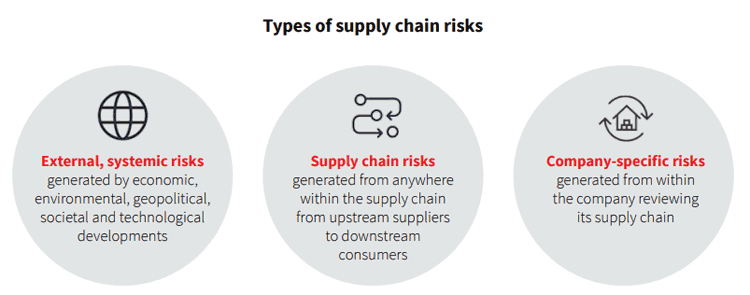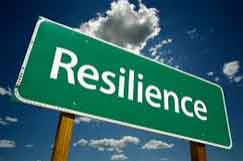The virus pandemic has certainly caused supply chain disruptions, starting in the first few months of 2020 as China's production and logistics infrastructure came to a new standstill in some regions.
Supply Chain Digest Says...
|
 |
So, resilience pays for itself, JLL says. But it's hard to know that for sure. |
 |
What do you say? |
| Click here to send us your comments |
|
 |
| Click here to see reader feedback |
|
Later, some US domestic suppliers were hit with forced closures and other woes, and demand varied wildly, from soaring for food and many consumer goods while collapsing in many other product areas.
Still not nearly close to the end, the pandemic is causing many companies to rethink their supply chains to add more resilience, and that means rethinking their networks.
A recent report from real estate company JLL (formerly Jones Lang Lasalle), for example, notes that "the focus on increasing resilience will likely result in some reconfiguration of supply chains, including changes in the location of industrial and distribution facilities."
The report notes that the move to low cost countries also means such global supply chain are typically more complex than national or regional ones, giving their added length and generally involving many more parties and more nodes, including manufacturing and distribution facilities.
Moreover, "the concentration of freight flows through a relatively small number of critical transport corridors and hubs has exacerbated the vulnerability of global supply chains, as has the widespread practice of just in time logistics management," the report notes.
Supply chain risks are of several types, but at a high level they can be viewed in the framework illustrated below from the report:

Source: JLL
As can be seen, JLL sees three main type of operational risk:
1. Hard to predict or prepare for external risks, such natural disasters, geo-political changes and more – that would include the current virus pandemic, or the earthquakes and tsunami in Japan in 2011
2. Supply chain risks, due to supplier issues, transportation challenges, and such
3. Company-specific risks, such as forecast error, poor network design, single sourcing, etc.
Like many others, JLL suggests one step to reduce risk is for companies to map their extended supply chains. Based on that companies should create a risk report around each node and link in the supply chain map using a combination of the many risk monitoring services plus a credit risk analysis of suppliers of all types.
(See More Below)
|
CATEGORY SPONSOR: SOFTEON |
|
|
| |
|
|
SCDigest notes such a supply chain mapping exercise, especially below the tier 1 supplier levels, for companies with complex products or large numbers of suppliers is a time-consuming process that is difficult if not impossible to fully complete.
JLL than offers six steps to consider to reduce current risks levels and increase supply chain resilience. Those are:
1. Supplier Diversification and Regionalization: The most basic rule is to avoid manufacturing or sourcing everything from one location or from one company. This is not simply about reducing reliance on China or any other single country, but also evaluating the upstream sources to lessen the risk of disruption. But geographic diversification may be hard to achieve in some product categories.
2. A Port Diversification Strategy: Although it might be more efficient and effective to import through one specific port, any type of disruption at this node could effectively shut down a business. Therefore companies should consider avoiding reliance on a single port in any one global region, JLL says.
 3. Less Just in Time and More Just in Case Inventory Management: JLL says companies should maintain additional inventories of critical items, such as parts or raw materials that are single or sole-sourced and/or for which the supply lead times are long and highly variable. Low interest rates means the costs of holding inventory are low. 3. Less Just in Time and More Just in Case Inventory Management: JLL says companies should maintain additional inventories of critical items, such as parts or raw materials that are single or sole-sourced and/or for which the supply lead times are long and highly variable. Low interest rates means the costs of holding inventory are low.
4. Find Multi-modal Transportation Options: JLL says companies should consider investing in distribution solutions that are close to parcel hubs, intermodal rail terminals or multi-modal hubs (e.g. road, rail and inland waterway) to mitigate the risk of tightened trucking capacity or skyrocketing freight costs.
5. Increased Use of Robotics: It's as simple as this, JLL says: as the cost of investing in automation comes down, companies should explore opportunities to reduce their reliance on people.
6. Re-evaluate Supply Chain Networks: "Building supply chain resilience involves a range of different trade-offs as measures to reduce risks impact on costs, efficiency and customer service," JLL observes. Companies should therefore periodically evaluate their supply chain networks to ensure they have the most service-effective and cost-efficient solutions in place that provide overlaps in the event of a shutdown in one of their locations.
In conclusion, JLL says that "Companies that can build resilient supply chains should reap the benefits in terms of improving supply chain agility and responsiveness to their customers, even if the costs associated with some parts of their supply chain (e.g., inventory holding costs) may rise."
So, resilience pays for itself, JLL says. But it's hard to know that for sure.
What do you think of JLL's recommendations to increase resilience? What would you add? Let us know your thoughts at the Feedback section below.
|